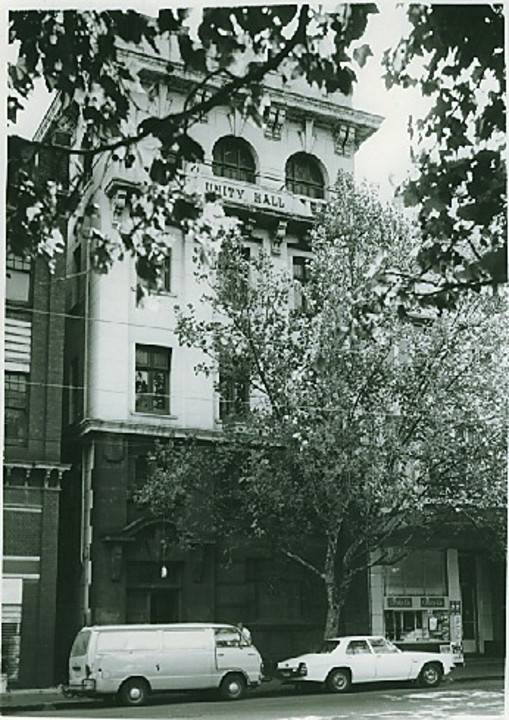| Back to search results » | Back to search page » |
|
Unity Hall
Location636 - 638 Bourke Street,, MELBOURNE VIC 3000 - Property No B4692
File NumberB4692LevelRegional |
|
Statement of Significance
What is significant?
The building known as Unity Hall was the headquarters of the Australian Railways Union for over eighty years from 1916 - 1999. It contained union offices and a meeting hall. Designed by the architect A.E.H. Carleton, it is reputed to have been built with the assistance of voluntary labour. Located at the West end of Bourke Street, it is near to, and, has a close association with, the significant transport interchange of the Spencer Street Railway complex.
Unity Hall is a narrow fronted, four storey building described as "Neo - Baroque" or small scale "Palazzo" in style. The facade of the building is in good and largely original condition with the exception of a heavy security shutter at the entrance and a broken projecting sign.
The lettering on the facade on the ground floor level and upper storey balcony and the commemorative plaque are a significant connection to union activity in Australia.
How is it Significant?
Unity Hall, the former headquarters of the Australian Railways Union (Victorian Branch) and other unions, is of historical, social and architectural significance at a Regional level. It also forms part of an architecturally significant streetscape.
Why is it Significant?
Unity Hall was one of the earliest substantial buildings designed for a single union. It was a significant centre of the trade union movement and played an important role in the development and consolidation of the transport unions in Victoria. Meetings held within the hall were instrumental in achieving substantial improvements in the working conditions and wages of the railway workers and, subsequently, other related union members. Members were able to come to Unity Hall for both advice and assistance in lodging claims for injury or wrongful dismissal. During the 1950's classes in the English language were organised within the building to facilitate the assimilation of migrant workers.
The historical value of the building is enhanced by its proximity to the major transport interchange of the Spencer Street Station and Railway Yards and other significant centres of communication such as the Mail Exchange building (1917). It is an integral part of the history of the Australian Railway Union (Victorian Branch) and the other unions who have operated from its offices.
Architecturally the building contributes significantly to the varied and historical streetscape at the West end of Bourke Street. The facade of the building is also a notable example of a Baroque Revival style within the city.
Classified: 19/06/2004
Group
Commercial
Category
Office building




